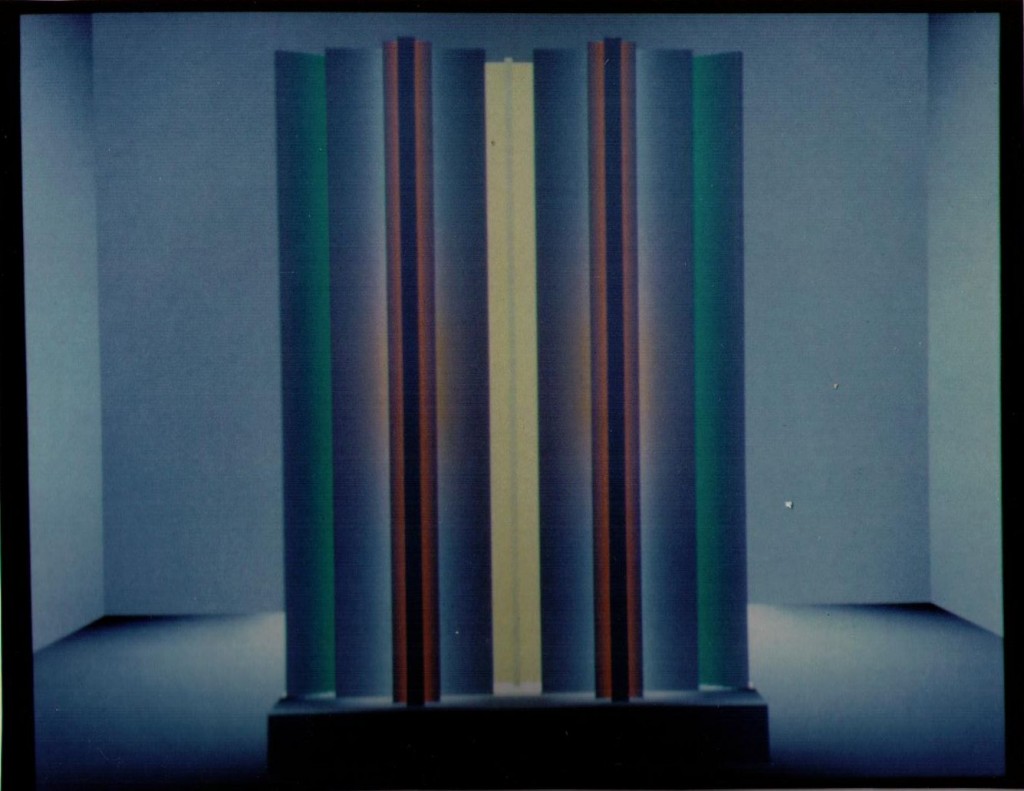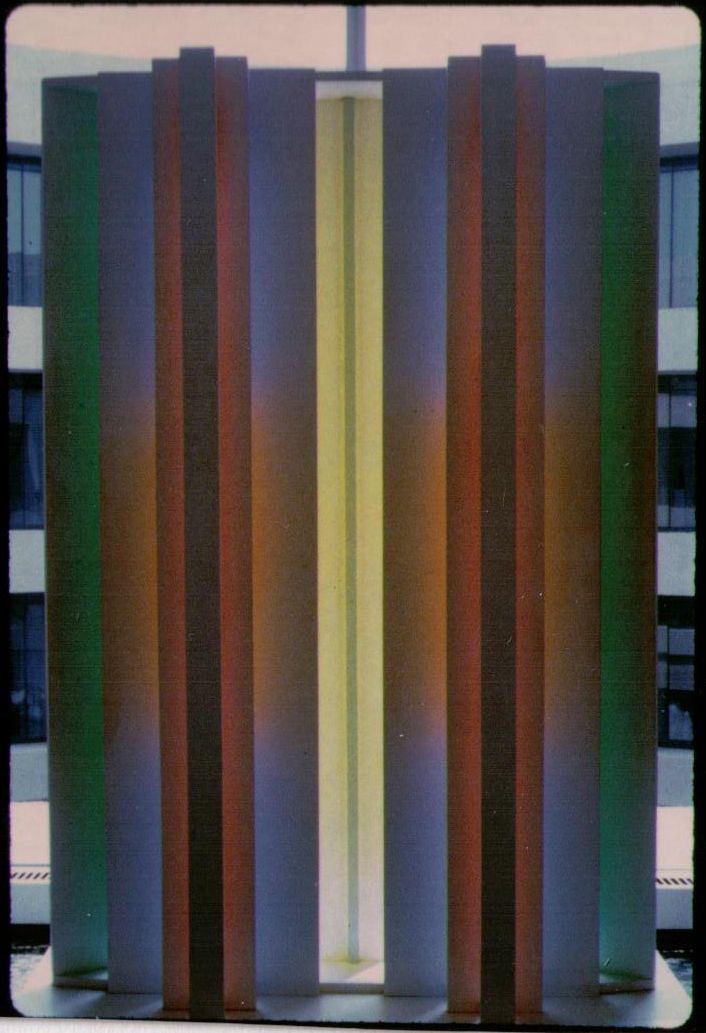In my post about Ken Torrance I mentioned seeing in 1984 a synthesized image that looked real. The soft shading of radiosity was a new look, not at all like the sharp-edged shadows and reflections seen with classical ray tracing. Cindy Goral kindly scanned in the images from her thesis (they’re also reprinted in Cohen and Wallace’s book on radiosity and Roy Hall’s book on illumination and color), as I wanted to put them up, for old-time’s sake.
The object is a sculpture by John Ferren, made in 1968, entitled Construction in Wood, a Daylight Experiment. I was happy to find this sculpture is still sometimes rotated into display at the Hirshhorn in Washington, DC, where Cindy saw it back around 1984. To quote this page, from 2007: “It is set up in front of an unshaded window, so that sunlight reflects the fluorescent paint on the back sides of the wood slats onto the white paint on the front sides, tricking your eye into imagining that the light comes from fluorescent bulbs.” Also, through the miracle of Google, Cohen and Wallace’s description of the sculpture is easily accessible; see that page for an overhead view. No Google Image or Flickr of it, though, that I could find.
What’s most interesting about this sculpture from a CG standpoint is how it was practically designed as a worst-case for ray tracing and best-case for radiosity. All the surfaces facing the viewer are white, so it is only through indirect diffuse-diffuse interreflection, a.k.a. color bleeding, that you see any color. A classical ray trace comes out black, as no light directly illuminates any of the surfaces. Here’s a modern-day version with Maya, at the bottom of the page (update: shucks, dead link and archive.org doesn’t have it. But, there’s a SketchUp model here to download, and a free SKP importer for Blender).
The sculpture, simulation:
and reality (photo by Jerry Scharf):

